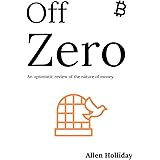Is the current crypto market creating more frustration than opportunity for your portfolio? As the digital asset landscape continues its intricate dance of price action, understanding the nuanced signals flashing across various charts is more critical than ever. In the accompanying video, we delved into the immediate short-term signals influencing Bitcoin, Ethereum, Solana, XRP, and Chainlink, analyzing key technical indicators and pivotal price levels.
This deep dive into Bitcoin and crypto technical analysis provides a comprehensive written companion, expanding on the insights shared in the video. We’ll explore the underlying dynamics behind recent rejections, potential reversals, and historical precedents that could shape the coming weeks. For traders and investors navigating these volatile waters, a clear understanding of current price structures and momentum is paramount.
Bitcoin’s Short-Term Crossroads: Bearish Divergences vs. Emerging Bullish Signals
Bitcoin’s price action has been a focal point for many in the crypto sphere, characterized by a persistent rejection from significant resistance levels. Specifically, the area around $117,000 has proven to be a formidable ceiling, preventing daily candle closes from confirming a strong breakout. This rejection aligns with existing short-term bearish divergences that have been influencing price movements over the past one to two months, hinting at a broader slowdown within the larger bull market context.
Despite this bearish undertone, a fascinating new signal is potentially emerging on the immediate short-term four-hour chart. The Relative Strength Index (RSI) recently entered oversold territory around the $112,000 mark, suggesting a potential for a short-term bounce or relief rally. While the price has continued to establish lower lows in candle closes, the RSI is tentatively forming higher lows. This discrepancy, if confirmed with subsequent green candle closes, would constitute a bullish divergence – a signal often preceding a temporary upward price movement or a break from previous bearish momentum.
Key Support and Resistance Levels for Bitcoin
As Bitcoin navigates this period, crucial support and resistance zones are being tested. The next major support level to watch closely sits between $110,000 and $111,000. A decisive break below this range could trigger a retest of lower support, found between $106,700 and $107,600, where substantial buying interest has historically emerged. Conversely, reclaiming and holding above the $117,000 resistance would be a significant bullish development, signaling a potential shift in short-term market dynamics.
Liquidation heatmaps further illuminate these critical levels. A relatively small amount of liquidity is clustered just above $111,000, suggesting a potential target for brief price dips. However, a much larger pool of liquidity remains above the current price, specifically around $118,000 to $119,000. While these pockets of liquidity can act as magnets, the overall price structure and short-term momentum currently lean bearish, making an immediate direct ascent towards higher liquidity levels less probable without a confirmed shift in momentum.
Altcoin Market Outlook: Ethereum, Solana, XRP, and Chainlink Under Scrutiny
While Bitcoin sets the general market tone, individual altcoins exhibit their own unique technical patterns and crucial price levels. The Bitcoin dominance chart, which currently shows a short-term bullish divergence, indicates that Bitcoin may either hold its ground or outperform altcoins in the near future. This often translates to altcoins either mirroring Bitcoin’s performance or, more often, underperforming it, especially during periods of Bitcoin weakness.
Ethereum’s Persistent Sideways Range
Ethereum, the second-largest cryptocurrency, continues its multi-month trend of trading within a defined sideways range. This pattern has seen ETH bouncing predictably between a significant support zone of $3,900 to $4,100 and a resistance area spanning $4,800 to $4,900. The immediate short-term price structure for Ethereum appears bearish, particularly after failing to hold above the $4,500 mark.
Currently, ETH is holding above an important support between $4,060 and $4,100, but is trading beneath a newly established resistance zone from $4,250 to $4,280, a level that previously acted as support. A retest of the stronger $3,900 to $4,100 support region is a highly probable scenario given the current market conditions and Bitcoin’s potential for further consolidation or slight pullback. The long-term significance of this range cannot be overstated; sustained trading within it suggests a market gathering strength for its next major move.
Solana’s Critical Juncture
Solana has been experiencing a significant pullback, breaking below the $230 level and subsequently challenging the support at $215-$216. The bearish divergence previously identified on the 12-hour Solana price chart continues to exert its influence, signaling a period of expected weakness in the coming days. This technical pattern suggests that sustained bullish price action is unlikely in the immediate term, with continued pullback or sideways consolidation being more probable outcomes.
A crucial level for Solana lies between $190 and $200. Maintaining price above this area is essential for preserving the larger bullish trend that has been in play since April. A confirmed two-day candle close below $190, and a failure to reclaim that level, would indicate a significant shift in price structure, potentially marking the end of the current bullish trend and the beginning of a larger bearish phase that could extend for weeks or even months. Conversely, should a bounce occur, immediate resistance would be encountered around $230 and then at the local highs near $250.
XRP’s Demand Zone and Descending Triangle
XRP remains under the influence of a larger bearish divergence on its weekly timeframe, a pattern identified months ago around its almost all-time highs in July. This divergence, characterized by higher highs in price but lower highs in the weekly RSI, has predictably led to a significant cool-off period throughout August and September. Despite this, XRP has found a strong demand zone between $270 and $280, where a consistent influx of buyers has prevented further downside.
However, the chart also reveals a potential descending triangle formation, marked by relatively horizontal lows and lower highs – a classically bearish price structure. A confirmed daily candle close below $270 would not only validate this bearish pattern but could also trigger a much deeper drop, potentially towards $240-$250, or even extending towards the lower $2 area. Should XRP manage a short-term bounce, strong resistance is anticipated between $310 and $315, where previous selling pressure has been evident.
Chainlink’s Structural Shift
Chainlink has now officially confirmed a significant change in its larger price structure, marked by a daily candle close below $22, specifically around $21.60 to $21.70. This event confirms both a lower high and a lower low in the price, not just in the candle wicks but also in the candle closes. This structural shift signals a move towards a bearish direction for Chainlink in the near to medium term.
Looking ahead, the $22 to $22.40 range is expected to act as a strong resistance zone. A retest of this area, especially if it fails to convert into new support, could see Chainlink heading towards the next major support level between $19 and $20. While occasional short-term bounces may occur, the overall outlook for Chainlink over the coming weeks and months appears challenging, suggesting a period more akin to its previous bearish trends rather than a bullish resurgence.
Historical Precedent and Strategic Positioning
Beyond the immediate technicals, understanding historical market cycles provides crucial context. September has historically been one of the most bearish months for Bitcoin. Interestingly, this current September is only slightly green, an almost break-even scenario, which is not as negative as past performances. However, as we approach the end of September, eyes are turning to October, which historically stands as the most bullish month on record for Bitcoin.
Since 2013, only two Octobers have closed in the red: one with a 12-13% decline, and another with a mere 3-4% drop. All other Octobers have seen significant green gains, often followed by strong performances in November. This historical pattern, while not a guarantee of future results, underscores why many seasoned traders view periods of market frustration or boredom, particularly after prolonged consolidation or pullbacks, as prime opportunities. As more participants exit the market due to weariness or losses, competition decreases, potentially setting the stage for substantial upside when the market eventually turns.
Strategic Trading Opportunities in Diverse Market Conditions
The fluctuating nature of the crypto market means opportunities exist regardless of the overarching trend. Even in a bearish environment, traders can employ strategies like short positions to profit from downward price movements. Conversely, bullish trends allow for long positions. Understanding how to utilize derivatives and leverage on crypto exchanges becomes crucial for capitalizing on these diverse market conditions.
For those looking to prepare for the next wave of trading opportunities, having an account set up on a reputable crypto exchange is fundamental. Platforms like Bitunix and Toobit, highlighted in the video, offer competitive trading environments and substantial bonuses for new users. For instance, Bitunix provides access to a 120,000 USDT prize pool and deposit bonuses like a $20 bonus for a $100 deposit, or $200 for a $1,000 deposit. Toobit offers up to 10,000 USDT in trial funds, 8,000 USDT in withdrawable stablecoins, and even a $30 sign-up bonus with a one-month VIP3 upgrade. Both exchanges are no-KYC, providing accessibility across many jurisdictions, though local regulations should always be verified. These incentives are often exclusive to users signing up through specific links, maximizing potential gains from initial deposits and trades.







